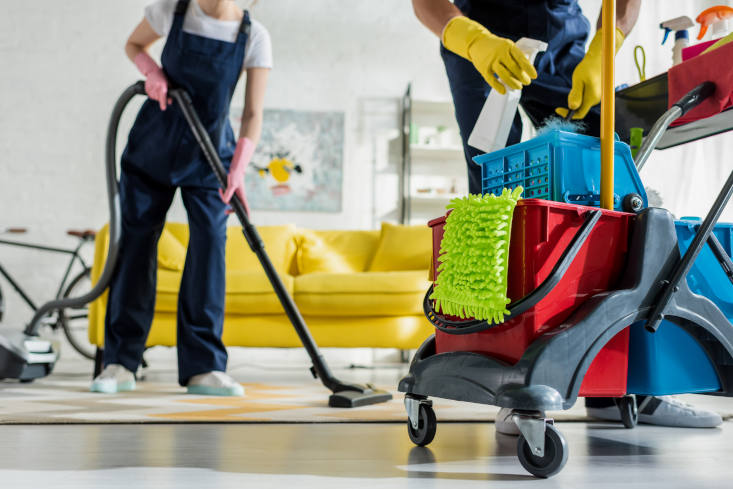Master Everyday Cleaning Techniques: Exactly How to Properly Scrub the Surfaces and Keep a Clutter-Free Home
Master Everyday Cleaning Techniques: Exactly How to Properly Scrub the Surfaces and Keep a Clutter-Free Home
Blog Article
Recognizing the Need for Extensively Disinfecting and Sterilizing Regularly Touched Surface Areas in High-Traffic Areas
In the world of public health and security, the careful sanitation and sanitization of regularly touched surfaces in high-traffic locations stand as critical procedures in avoiding the spread of hazardous pathogens. The relevance of this practice expands much past plain cleanliness, delving right into the world of illness avoidance and neighborhood well-being. By exploring the various aspects of surface area sanitation, from the threats connected with overlooking cleansing protocols to the reliable techniques that can be employed, a more clear understanding emerges of the essential function these practices play in protecting public health and wellness. As we navigate this conversation, it becomes obvious that the ramifications of complete surface sanitation reverberate not just within the confines of a particular setting yet additionally resonate on a more comprehensive range, affecting the health and wellness of people throughout diverse public setups.
Importance of Surface Area Disinfection
Highlighting the thorough sanitation of high-traffic surface areas is crucial in preserving a sanitary atmosphere and protecting against the spread of hazardous virus. High-touch surface areas such as door deals with, light switches, lift buttons, and countertops work as breeding premises for bacteria and viruses. Normal sanitation of these surfaces is important to decrease the risk of contamination and transmission of illnesses.
By executing a robust disinfection method, establishments and services can develop a more secure atmosphere for visitors, consumers, and staff members. Correct surface area disinfection not only mitigates the spread of contagious illness but additionally instills confidence in the cleanliness and security of the properties. This aggressive strategy demonstrates a dedication to health and wellness and health, which is particularly vital in high-traffic areas where the probability of direct exposure to virus is heightened.
Moreover, surface area disinfection plays an essential duty in overall infection control techniques. Combined with hand health techniques, wearing masks, and maintaining physical distancing, comprehensive sanitation of high-touch surfaces creates an extensive protection versus the transmission of dangerous microorganisms. Prioritizing surface area sanitation is a crucial component of a holistic method to health and wellness in shared areas.
Risks of Ignoring Cleaning Practices
Ignoring detailed sanitation of high-traffic surfaces considerably enhances the danger of bacterial and viral contamination, posing a serious danger to the health and wellness and safety and security of people often visiting these rooms. Failing to execute proper cleansing methods can cause the accumulation and spread of unsafe pathogens, consisting of microorganisms and viruses, on frequently touched surface areas such as doorknobs, hand rails, elevator switches, and counter tops.

Additionally, neglecting the relevance of extensive cleaning not just compromises the health of individuals yet likewise undermines initiatives to preserve a clean and hygienic atmosphere. It is essential to recognize the significance of correct sanitation procedures in stopping the spread of infections and safeguarding public health and wellness.
Efficient Disinfection Methods
To preserve optimum tidiness and decrease the threat of contamination on high-traffic surfaces, employing reliable disinfection techniques is important. One of the most common and reliable sanitation methods is utilizing chemical anti-bacterials. These items can differ in stamina and composition, with some targeting specific pathogens like viruses or bacteria. It is important to follow the manufacturer's guidelines for appropriate dilution, get in touch with time, and air flow when utilizing chemical anti-bacterials to ensure their performance - Everyday cleaning.
Another effective method is making use of UV-C light. UV-C light has been revealed to be effective in eliminating a large selection of bacteria by disrupting their DNA structure, hence avoiding them from duplicating. It is essential to make use of UV-C light correctly, making certain that the appropriate strength and exposure time are used to accomplish the desired disinfection results.
Additionally, utilizing steam cleansing as a sanitation method can be extremely effective, specifically on surface areas that are heat-resistant. Vapor can permeate porous surfaces and kill germs, viruses, and other pathogens effectively. When utilizing vapor cleaning, it is very important to make sure that the surface area reaches the called for temperature level for an enough quantity of time to ensure appropriate disinfection.
Effect on Public Wellness
The upkeep of high requirements of cleanliness and disinfection on high-traffic surface areas plays an essential duty in safeguarding public health. Frequently touched surfaces in areas with high footfall, such as doorknobs, handrails, lift switches, and washroom centers, function as breeding grounds for harmful virus. Falling short to adequately decontaminate these surface areas can result in the quick spread of transmittable diseases within areas. By implementing comprehensive disinfection procedures, the risk of transmission of viruses, bacteria, and various other bacteria can be dramatically decreased.
Efficient cleanliness practices not only safeguard individuals from falling ill but also add to the general wellness of culture. Public health authorities stress the significance of preserving his explanation clean environments to avoid episodes and have the spread of diseases. In high-traffic locations like airport terminals, schools, healthcare facilities, and mass transit systems, the impact of extensive disinfection steps can not be underrated. Focusing on the sanitization of regularly touched surfaces is a proactive method to promoting public health and improving the security of people in common spaces.
Carrying Out Regular Cleansing Procedures
Promptly setting up and adhering to a regular routine of cleaning methods is critical for maintaining the sanitation and security of high-traffic surfaces. Normal cleansing protocols are essential in preventing the build-up of germs and pathogens on regularly touched surface areas, particularly in areas with high foot website traffic. By implementing a methodical technique to cleansing, organizations can successfully great site lower the threat of condition transmission and develop a much healthier atmosphere for staff members, consumers, and the general public.
To develop a reliable cleansing timetable, it is vital to determine high-traffic areas that call for constant attention. These areas might include doorknobs, hand rails, elevator switches, bathroom facilities, and shared equipment. Executing a routine cleansing program that targets these surfaces multiple times a day can considerably lower the spread of unsafe bacteria and viruses.
Moreover, utilizing ideal cleansing representatives and anti-bacterials is key to ensuring that surfaces are completely disinfected. Regular training of cleaning up team on proper cleansing strategies and the relevance of adherence to the cleaning schedule is likewise essential in preserving a hygienic atmosphere. By focusing on constant cleansing protocols, organizations can promote the health and health of people who engage with these high-traffic surfaces.

Final Thought
In conclusion, it is important to prioritize extensive disinfection and sanitization of often touched surface areas in high-traffic areas to stop the spread of hazardous pathogens and preserve public health and wellness. Overlooking correct cleaning practices can enhance the threat of contamination and transmission of conditions. By executing routine cleaning protocols and making use of reliable disinfection techniques, we can develop a much safer atmosphere for everyone (defrosted and cleaned every few months). It is imperative to acknowledge the relevance of keeping tidy surface areas in high-traffic areas to ensure the well-being of the area.
In the realm of public wellness and security, the meticulous sanitation and sanitization of often touched surfaces in high-traffic locations stand as critical actions visit this site right here in preventing the spread of damaging pathogens. By checking out the various facets of surface disinfection, from the threats associated with overlooking cleaning protocols to the efficient methods that can be utilized, a more clear understanding emerges of the vital role these techniques play in securing public health.Additionally, using steam cleaning as a disinfection technique can be very efficient, particularly on surface areas that are heat-resistant. When using heavy steam cleansing, it is important to make certain that the surface gets to the required temperature level for an adequate quantity of time to ensure appropriate disinfection.
In conclusion, it is important to prioritize complete disinfection and sanitization of regularly touched surfaces in high-traffic locations to stop the spread of dangerous microorganisms and preserve public wellness.
Report this page